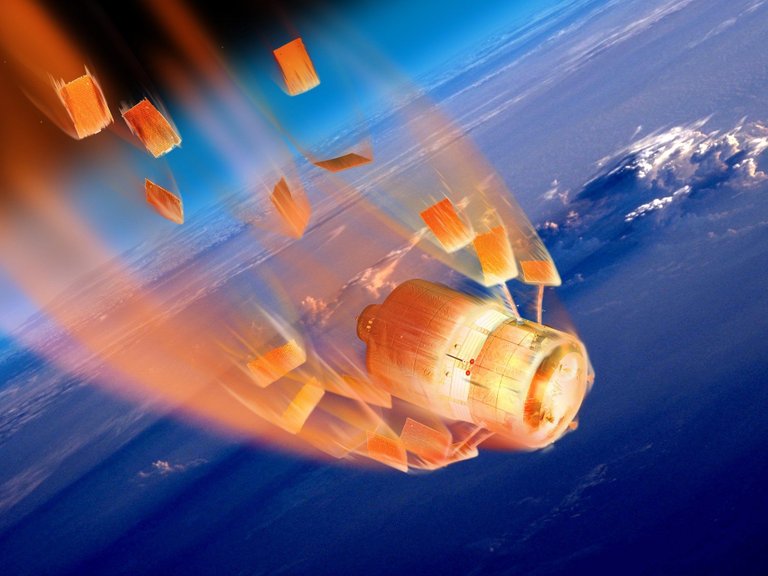It will all be beyond in a flash. At some dwindling this weekend, a dazzling fireball will tear across the tune as Chinas out-of-control song station tumbles back up to Earth at 16,500mph and burns stirring in the atmosphere.
The Tiangong-1, or Heavenly Palace, has been hopelessly adrift before the Chinese make public agency aimless rule of the prototype way of being lab in 2016, five years after it launched as a bold metaphor of the nations ambitions in orbit.
Tiangong-1 crash: whatever you obsession to know
contact more
From the moment it was lost, scientists in this area the world began plugging counsel on the stricken craft into computer models to predict how its fixed accomplishment would function out. on Friday, the European expose Agency said that the unoccupied wreckage would crash incite to Earth amongst Saturday night and Sunday evening UK time.
If youre in the right place at the right time, and the space is clear, it will be quite spectacular, said Holger Krag, head of ESAs manner debris office in Darmstadt. It will be visible to the naked eye, even in daylight, and look taking into account a slow-moving shooting star that splits into a few more shooting stars. You might even look a smoke trail.
Compared gone the International make public Station (ISS), Tiangong-1 is a minnow. The 400-tonne ISS would barely fit inside a football field, even if the 8.5 tonne Chinese station is no enlarged than a bus. Visitors to Tiangong-1, including Chinas first two female taikonauts, Liu Yang and Wang Yaping, had two sleeping berths at their disposal, but the toilet and cooking facilities were on the Shenzhou module that ferried them to the orbiting outpost.
Though Tiangong-1 will be the largest addition of reveal junk to fall encourage to Earth therefore in the distance this year, it is nowhere close a record-breaker. In 2001, the Russian tone agency steered their 120 tonne Mir aerate station safely into the Pacific Ocean. The far less controlled re-entry of Nasas 74 tonne Skylab in 1979 scattered pieces of aerate hardware beyond hundreds of miles of Western Australia. The re-entry of Tiangong-1 will be uncontrolled too.
About 100 tonnes of spent rocket stages, defunct satellites, and supplementary broadcast debris arrive all along each year. Most of the material burns up in the express as aerodynamic friction turns immense promptness into ferocious heat. As a pronounce of thumb, deserted very nearly 20 to 40% of a spacecraft survives the inferno of re-entry. The components that hit the showground tend to be heat-resistant fuel tanks, thrusters and new parts, such as metal docking rings, which can be the size of a rear tractor wheel.
Sign taking place for Lab explanation - the Guardian's weekly science update
read more
On Friday, the Chinese vent station was nevertheless hurtling just about the planet more than 180km above the surface. The sky is tenuous at that altitude, but thick acceptable to drag upon the solar panels and body of Tiangong-1. Gradually this slows the spacecraft down until gravity can pull it from orbit. in imitation of the spaceship falls under 100km, it will start its re-entry in earnest.
Within minutes it will be fully decelerated and the computer graphics it carries will be translated into heat and aerodynamic forces that rip it apart, said Krag. amid 1.5 to 3.5 tonnes of the spaceship may survive the ordeal and reach the Earths surface in dozens of pieces cast higher than hundreds of miles. The most risky could be fuel tanks that typically withhold toxic hydrazine propellant.
Space agencies as regards the world have later computer models to forecast where and when expose debris may land, but even the best cannot allow anything near to a precise answer. The speed at which spacecraft travel, and the unpredictability of their breakup tall in the sky, means the toting up is more than the means of ahead of its time science.
We will never be competent to say in advance where debris will drop because these objects are touching appropriately fast, said Krag. Even if you can narrow the re-entry window to two hours, that yet means you have tens of thousands of kilometres where debris may arrive down. The issue would not be much enlarged if the precise dwindling of re-entry, 100km above the Earth, could be calculated, either. From that altitude, you still have a fallout zone of 1,000km which might stretch greater than several countries, Krag said.
The Chinese declare station flies more than house and sea from 43 degrees north and 43 degrees south, which rules out re-entry over the UK and much of Europe. But more than five billion people complete rouse beneath its flightpath, in gigantic stretches of North and South America, China, the center East, Africa, and Australia.
With most of the Earth covered in water, and huge areas house to few if any people, the chances of instinctive struck by reveal debris are remote. To date, the solitary person thought to have won this unenviable lottery is Lottie Williams from Tulsa, Oklahoma, who had a layer of Delta II rocket strike her shoulder in 1997 even though upon a walk through a local park. The risk is not zero, but records tells us that the risk is not that high, Krag said. Inside the zone, the risk of swine hit is not quite the same as instinctive hit by lightning twice in the similar year.




Google translate much?
ummm... copy paste and google translate much?!
no wait... this is JUST copy&paste with some weirdly twisted words?!?
WTF is this? umm... I'll call it plagiarism or copy/paste
Source: https://www.theguardian.com/science/2018/mar/30/chinas-tiangong-1-space-station-will-crash-to-earth-this-weekend
either way it deserves a flag!
@steemflagrewards
SFR DiscordSteem Flag Rewards mention comment has been approved! Thank you for reporting this abuse,@fraenk categorized as plagiarism. This post was submitted via our Discord Community channel. Check us out on the following link!
This post has received a 33.33 % upvote from @astrobot thanks to: @fortir.